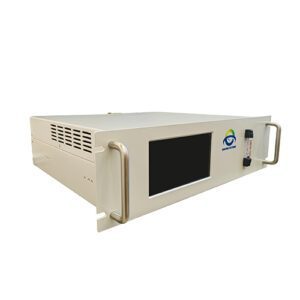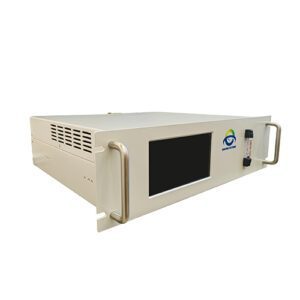Applications for Hydrogen(H2) Gas Analyzer
- Hydrogen production and purity
- Syngas & gasification
- Pyrolysis
- Steel-making
- Power generation
- Metal heat-treating
TCD (Thermal Conductivity Detector) technology is another commonly used sensing technology in hydrogen gas analyzers, including those designed for hydrogen gas analysis.
In a TCD-based hydrogen gas analyzer, the principle of operation is based on the thermal conductivity difference between hydrogen and other gases present in the sample. The TCD consists of two temperature-sensitive elements, typically made of platinum or tungsten wire, which are heated to a constant temperature. One element is exposed to the reference gas (usually air or an inert gas), while the other is exposed to the sample gas containing hydrogen.
When the sample gas flows through the TCD, the thermal conductivity of the reference gas remains constant, while the thermal conductivity of the sample gas changes due to the presence of hydrogen. The difference in thermal conductivity between the reference and sample gases causes a temperature imbalance between the two elements of the TCD. This temperature difference is measured and converted into an electrical signal, which is then correlated with the hydrogen concentration in the sample gas.
TCD-based hydrogen gas analyzers offer several advantages:
- High Sensitivity: TCD technology provides high sensitivity to hydrogen gas, allowing for accurate and precise measurements even at low concentrations.
- Wide Measurement Range: TCD-based analyzers can measure a wide range of hydrogen concentrations, from trace levels to high percentages.
- Fast Response Time: TCD sensors offer fast response times, enabling real-time monitoring and detection of changes in hydrogen concentration.
- Selectivity: TCD technology is relatively selective to hydrogen and can distinguish it from other gases present in the sample.
- Robust and Reliable: TCD sensors have a simple design with no moving parts, making them robust and reliable. They can withstand harsh operating conditions and require minimal maintenance.
TCD technology is widely used in various applications where accurate and reliable measurement of hydrogen gas concentrations is required, including hydrogen production, storage, and distribution, fuel cell systems, industrial processes, and hydrogen safety monitoring.








